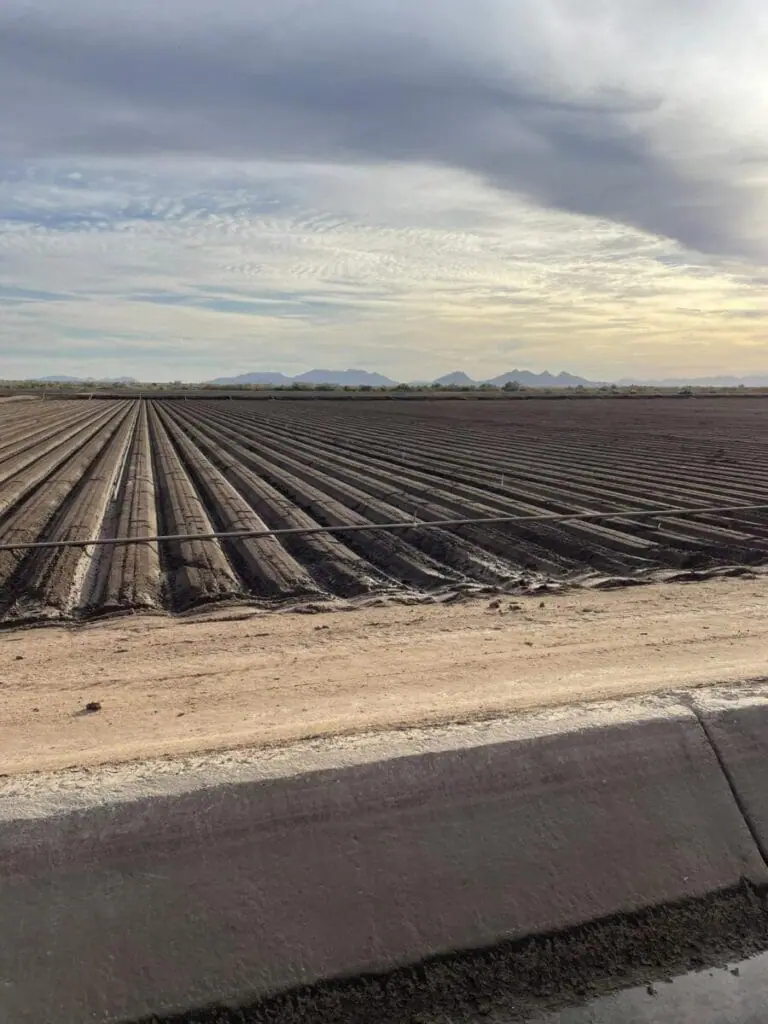By Maddie Morales, ASU sustainable food systems graduate student

Under the bright glow of the afternoon sun, our motorcade of student-filled SUVs arrived at Nature Betteravia Farms in Yuma, AZ, for the second stop of the day. Our conversation with Mike Pasquinelli, a 3rd generation farmer and Yuma Fresh Vegetable Association President, revealed a peek into the challenges facing many farmers in this region.
Food safety
You may recall the devastating E. coli outbreak of 2018. Even though many of my classmates had never been to Arizona, they recognized the Yuma region from headlines reporting mass contamination affecting romaine lettuce availability across the country. The vast produce recalls wreaked nationwide havoc on the leafy green supply chain, leading some to question the resilience of our produce supply chain - especially in the winter months when a majority of our nation’s produce is coming from Yuma. Mike noted that this outbreak resulted in many of the improved food safety measures in place across the region today. For example, his farm follows strict machine cleaning protocols and advanced lot identification tracking systems to satisfy increased safety audits. As a preventative measure, he also does not allow gleaning to take place on the farm. While safety measures for the region have improved, our nation’s reliance on Arizona for produce throughout the winter months has not changed.
“There is going to be a big fight about water rights.” - Mike Pasquinelli
There is not a single farmer in Arizona who is not thinking about water use. Mike’s farm allotment is four-acre feet of water per year. Luckily, he reports that growing lettuce only uses about half that. While the future of water rights for the region is yet to be determined, he emphasized that his operation prioritizes water sustainability with new technology. He explained that their use of probes and sprinklers has allowed for dramatic improvements in efficiency, ensuring that water is only used when and where it is absolutely needed.

Organic vs. Conventional
The farming practices at Mike’s farm are driven by demand. With 12,000 acres in conventional production and 4,800 acres in organic, the farm is able to satisfy a wider span of customer needs. Annual bids and contracts dictate crop plans, ensuring produce from each field planted has a predetermined destination. Production costs for organic are about $1,000 per acre higher than that of conventional, and yields are slightly lower. While demand for organic produce continues to grow and farmers can put higher prices on organic produce, Mike reports that the margins for organic are slimming.
While we have studied food safety, water use, and growing methods throughout the semester - hearing this first-hand experience contextualizes the tradeoffs of every decision. Mike approaches these challenges by prioritizing the sustainability of his farm operation and the quality of the final product. I am grateful for farm operators like Mike, who continually make improvements to grow safe produce for consumers near and far.
This blog is part of a series from the Swette Center's annual Arizona Food and Farm Immersion, a required course in their two graduate programs. Students tour the state, meeting with farmers, ranchers, entrepreneurs, government staff, and non-profit leaders.